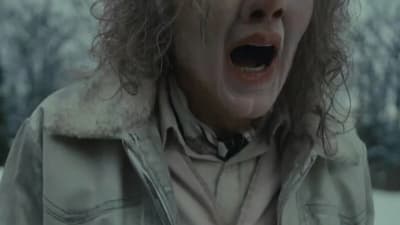
In a season echoing with exhaustion, the chorus of discontent grew louder as World No. 2 Iga Świątek and World No. 3 Coco Gauff openly challenged the relentless WTA schedule, calling out the strain of 10 mandatory WTA 1000s and six WTA 500s. From Beijing, Świątek admitted she would have to skip events “to stay healthy,” while Gauff declared playing six 500s “impossible.” The WTA’s response: “athlete welfare is always a top priority”, rang against the backdrop of players stepping away early. With Daria Kasatkina now joining that exodus from the WTA side, Amanda Anisimova rises as the unexpected symbol of resilience in a tour gasping for balance.
Just yesterday, Daria Kasatkina joined a swelling wave of top players stepping away early from the WTA season, not in defeat, but in preservation. The world No. 19, worn and transparent, revealed her decision through a candid social media post confirming she would not play again until 2026. “I’ve hit a wall and I can’t continue. I need a break,” she wrote, words that resonated like a cry for balance in a sport that often rewards suffering over sanity. Her honesty peeled back the glittering surface of the women’s tour to reveal the exhaustion pulsing beneath it.
As the news rippled across the tennis world, journalist Jon Wertheim captured the mood perfectly in a searing X post: “Immutable forces: time, gravity, the amount of tennis human beings – even when lured by bonuses and ‘mandatory’ tournaments – can endure. Maybe one day the tours accept this? ….Kasatkina ends season early and says ‘I am at breaking point.’” It was a truth the sport has long sidestepped. Soon after, a fan re-shared Wertheim’s post, invoking Amanda Anisimova’s story as a counterpoint to burnout: “Players have to be thinking about how Anisimova took time off and what’s happened since.” Wertheim re-shared it again, adding, “Really good point…not only are players fried. There is now a growing body of evidence that you can get off the elliptical for a while and emerge better for it…”
And indeed, Amanda Anisimova’s story reads like a parable for the modern player, proof that stepping away can sometimes lead to revival. In May 2023, she took a break from tennis to heal her mind and rediscover her joy. “I got into art when I was struggling with my mental health, and it was something that I did in my free time just to get my mind off of things,” she once said. Painting became her refuge, the brush her therapy. And when she returned in 2024, she didn’t just return to tennis, she redefined herself.
Really good point…not only are players fried. There is now a growing body of evidence that you can get off the elliptical for a while and emerge better for it… https://t.co/RuuR18wapc
— Jon Wertheim (@jon_wertheim) October 6, 2025
Her comeback was electric. She reached her first WTA 1000 final at the Canadian Open in 2024, then lifted her maiden 1000 trophy in Doha, overpowering Jelena Ostapenko in straight sets. At Wimbledon, she crafted one of the most inspiring runs of the year. Seeded 13th, she stunned world No. 1 Aryna Sabalenka to reach her first Grand Slam final. Even after a heartbreaking loss at the US Open, she rebounded by conquering the China Open, proving that rest doesn’t weaken champions; it refines them.
Kasatkina’s decision now mirrors a pattern echoing through the locker rooms. Elina Svitolina, Beatriz Haddad Maia, and Paula Badosa have all halted their seasons early. Svitolina admitted she was not “in the right emotional space” to continue, while Badosa, battling recurring injuries, confessed she struggled to push through “the toughest, most painful moments.” Each story feels like a verse in the same lament, the tour’s rhythm has become relentless, and its melody is unsustainable.
Even as voices grow louder, with Coco Gauff and Carlos Alcaraz sounding alarms over burnout, nothing seems to truly change. Now, even Novak Djokovic has weighed in, urging the sport to face the uncomfortable truth: tennis cannot keep running players into the ground and expect brilliance to shine forever.
Novak Djokovic criticizes disunity amid Gauff-Alcaraz scheduling outcry
As the tennis season grinds deeper into exhaustion, the whispers of burnout grow louder. Yet, while many stars cite fatigue, some still take part in exhibition events, a contradiction that Novak Djokovic understands but doesn’t excuse. For him, the problem runs deeper than scheduling or fatigue; it’s about unity, or rather, the lack of it.
“In the end, as a player and someone that has been playing at the highest level for more than 20 years, I can say that the players are not united enough, and players are not participating enough when they should be,” Djokovic said recently ahead of his Shanghai Masters clash against Marin Cilic.
The 24-time Grand Slam champion’s words carried the weight of experience and frustration. “They make the comments, complain, and then go away. And if something is wrong after a certain amount of time, they come back again,” he added, cutting through the noise of empty talk and fleeting outrage.
For Djokovic, inconsistency is the true opponent. He called on players to commit, to invest their time, their energy, and their conviction, not just when convenient, but when it counts.
Because without unity, as Djokovic warned, the dream of meaningful change will remain forever out of reach.
More must-reads:
- Four American women could qualify for WTA Finals for first time in 23 years
- Phillies' Brandon Marsh sets the record straight on his unkempt appearance
- The 'Most NFL QB two-rushing-TD games' quiz
Breaking News
Trending News
Customize Your Newsletter
 +
+
Get the latest news and rumors, customized to your favorite sports and teams. Emailed daily. Always free!








